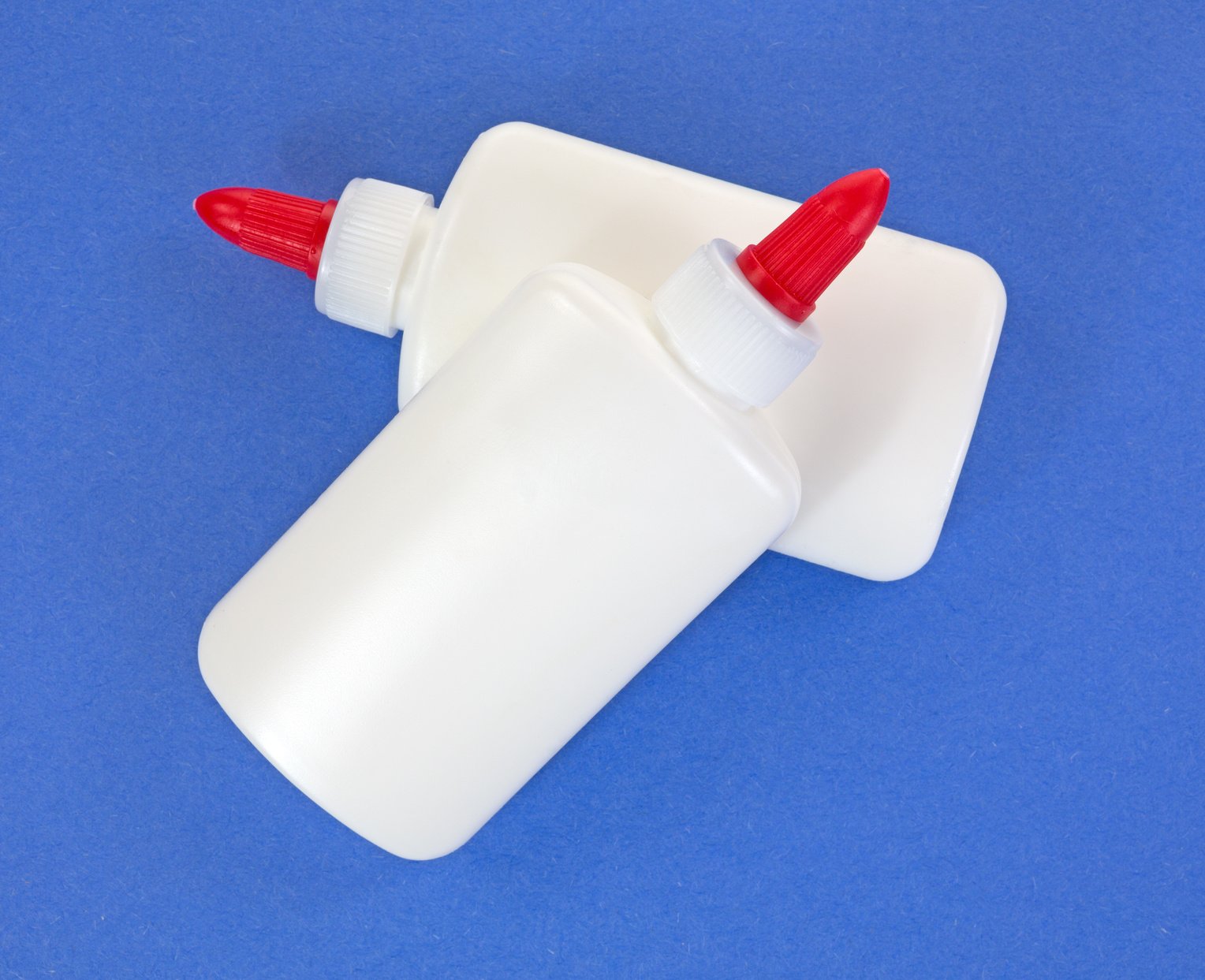At first glance, cosplay can look really intense — and we’re not just talking about the huge armored and electrified cosplays you see at the biggest conventions. It can also seem overwhelming on the workbench (or the kitchen table, or the garage floor. You get the picture). When it comes to adhesives, there are so many high-tech and specialized options to choose from that it’s hard to know where to start. Of course, the adhesive you use depends entirely on what you’re trying to do with it, but sometimes, the best choice is a simple one. One handy adhesive you’ve probably known for most of your life is white glue.
Known by many names (including school glue, PVA glue, Elmer’s, or even, confusingly, wood glue in some contexts), white glue has a few useful properties that make it suitable for cosplay builds. In this post, we’ll explain how to use white glue for cosplay as well as the pros and cons of working with it.
Best Uses for White Glue in Cosplay

If you have a bottle (or a few bottles) of white glue on hand, you can use it a few different ways in your cosplay. In general, white glue is most useful in applications where it can be used as a coating. To start, white glue can be used to seal EVA foam before painting. In order to keep your EVA from sucking up all of your paint, you have a few choices of sealants, and many cosplayers prefer white glue for its smooth application. When diluted with water, white glue makes a brittle sealant that’s paintable and dries clear.
Along similar lines, white glue can be used as a primer for Worbla or other thermoplastics. Most thermoplastics, when stretched, still have a lot of pitted texture than can show through your paint and ruin your finish. A favorite of Kamui Cosplay, white glue can significantly smooth down uneven textures on Worbla that has already been stretched and formed.
Besides sealing and priming, white glue can also be used as a general adhesive for attaching small elements made of a variety of materials. If you’re working with paper-based materials, like cardboard or paper mache, white glue could be one of your top adhesive options for adding decorative elements or small pieces to your base. Also, in a pinch, white glue can actually be used on a surprising range of materials, including ceramics, fabric, leather, plastic, rubber, stone, insulation foam, and wood. In these situations, white glue is best suited only for small pieces you need to stick on to the main body of your cosplay or prop.
The Benefits of Building with White Glue
 While one of the more basic adhesives you can use for cosplay, there are benefits to working with white or school glue in certain situations. Here are some of the advantages of white glue:
While one of the more basic adhesives you can use for cosplay, there are benefits to working with white or school glue in certain situations. Here are some of the advantages of white glue:
- White glue is very easy to find in any craft store or general retailer, and bottles are fairly inexpensive, especially compared to more specialty adhesives.
- It’s non-toxic and safe to use indoors without a respirator or gloves.
- White glue is intended to provide a permanent bond.
- It dries clear, so any mistakes or runs will be hard to notice or easy to disguise.
- It’s paintable and water-soluble.
- White glue, as a sealant or primer, lays flat on top of your piece without much work and provides a somewhat flexible seal that works well on curved pieces.
White Glue Challenges
 On the other hand, there are challenges to building cosplay with white glue, just like there are challenges with any other adhesive you might choose to use. Here are some of the most important challenges you should be aware of when working with white glue:
On the other hand, there are challenges to building cosplay with white glue, just like there are challenges with any other adhesive you might choose to use. Here are some of the most important challenges you should be aware of when working with white glue:
- While white glue is a permanent adhesive, it may not offer as strong a bond as more serious permanent adhesives, like super glue or contact cement, to name a few.
- White glue can potentially crack and wrinkle when used to seal foam, especially on armor and weapon parts that are put under a high amount of stress or friction. White glue may be a better sealant option only for parts that don’t need to move much.
- While white glue does have some flexibility, that flexibility does have limits. While it can be used on curved surfaces, you probably won’t be able to bend your foam or reform your thermoplastic once the white glue has been applied.
- Though white glue is washable, it can be somewhat messy to apply. If you’re not squeezing it straight from the bottle, you may find it difficult to transfer the glue to a different container and then close it up again if you don’t use everything you dumped out.
The Flexbond Alternative
While one of the beauties of white glue is its simplicity, and that simplicity can be enjoyable to work with in many applications, sometimes you really do need a more specialized product to make the best cosplay possible. If you’re comfortable with white glue but you’re looking for a better performing adhesive, there is a more innovative solution on the market, and it’s called Flexbond. Flexbond is basically a mixture of white glue and latex, so when used to coat foam or Worbla, it results in the smooth texture of white glue but with much more flexibility. You can literally crush a piece of thermoplastic primed with Flexbond, and the coating still won’t crack. While Flexbond is not nearly as accessible as white glue (it’s typically only sold as a theater adhesive), it can provide a high-quality finish using a similar process as white glue.